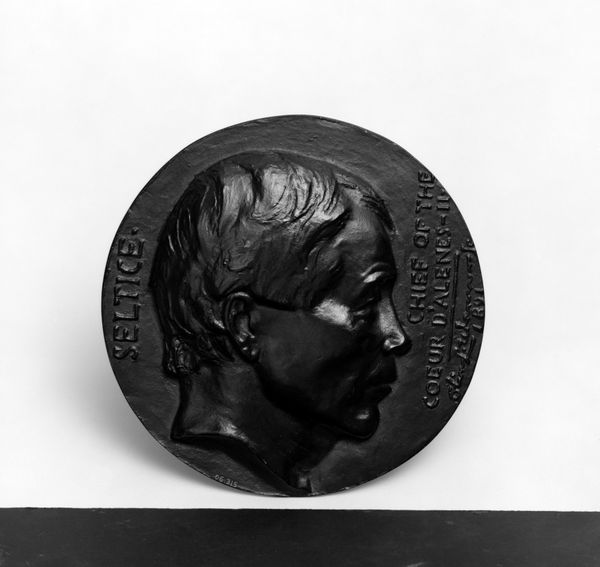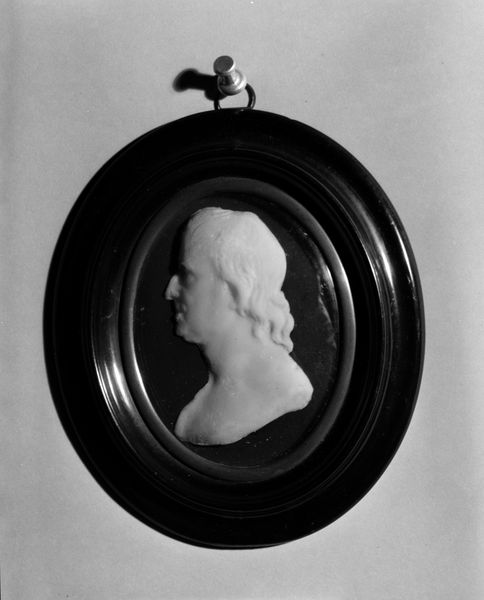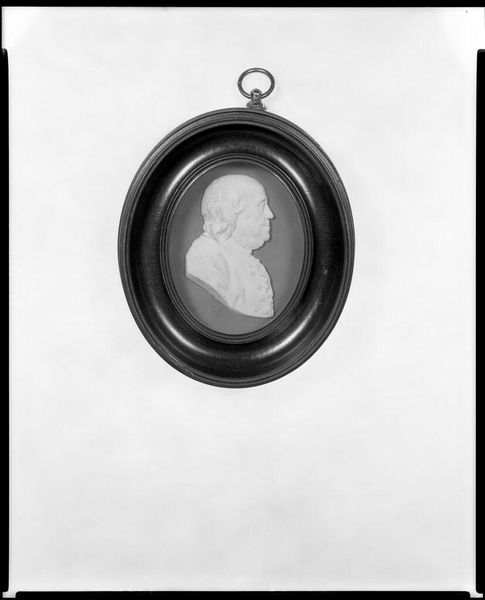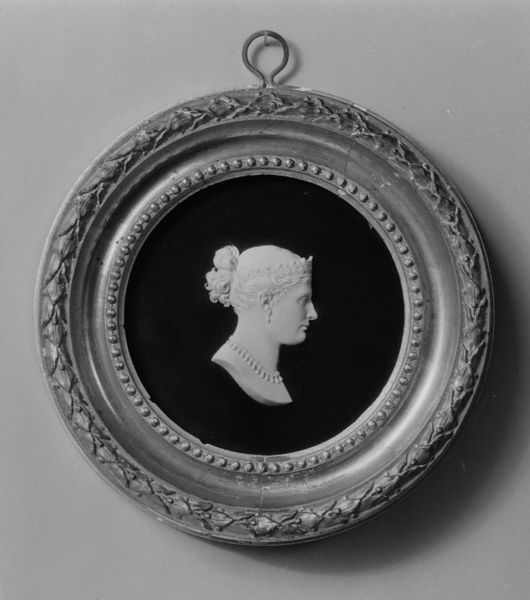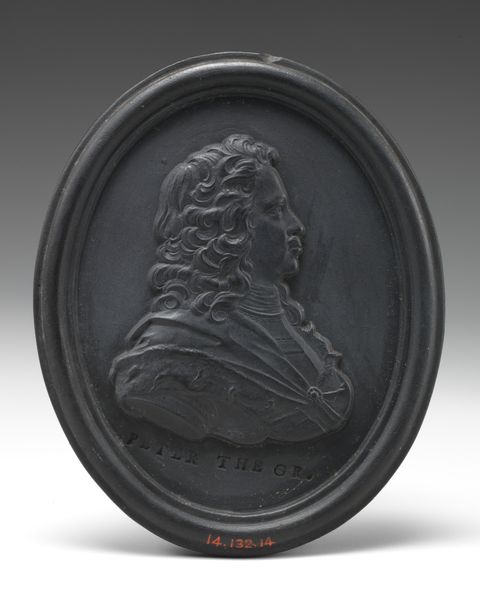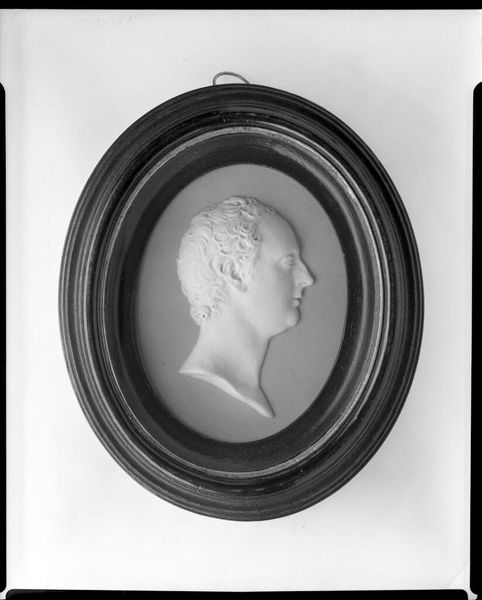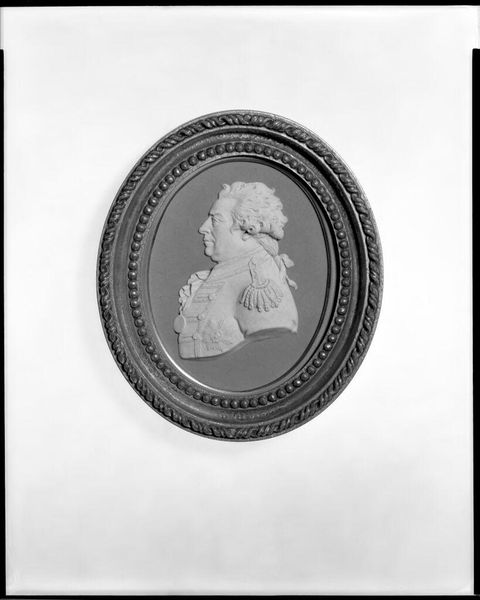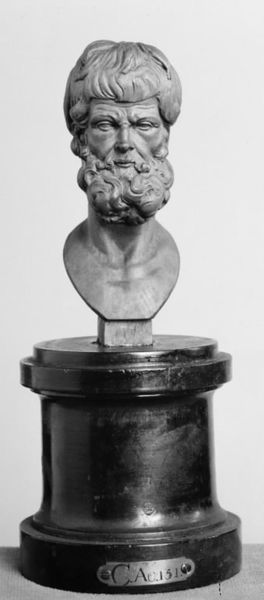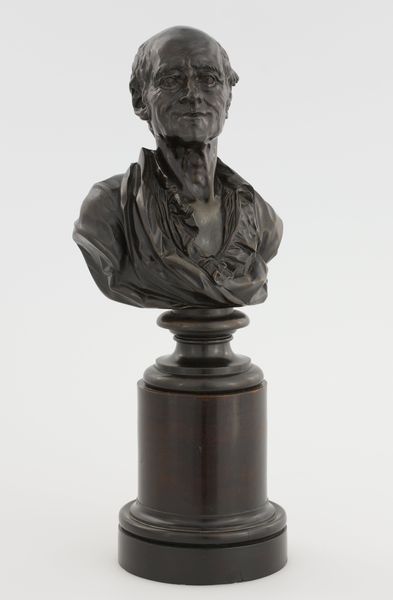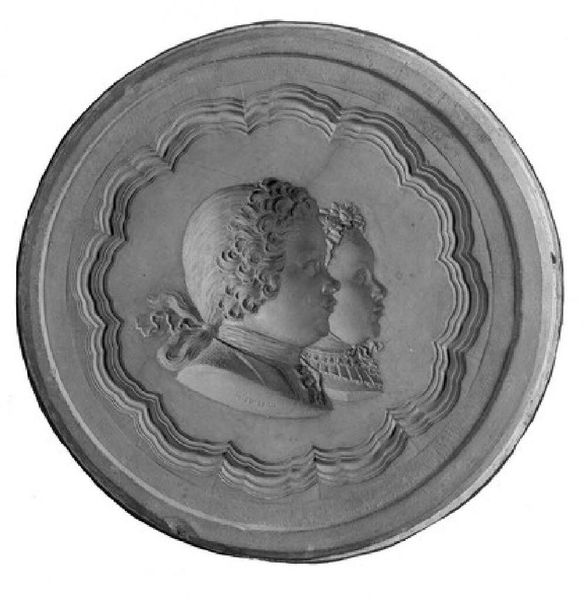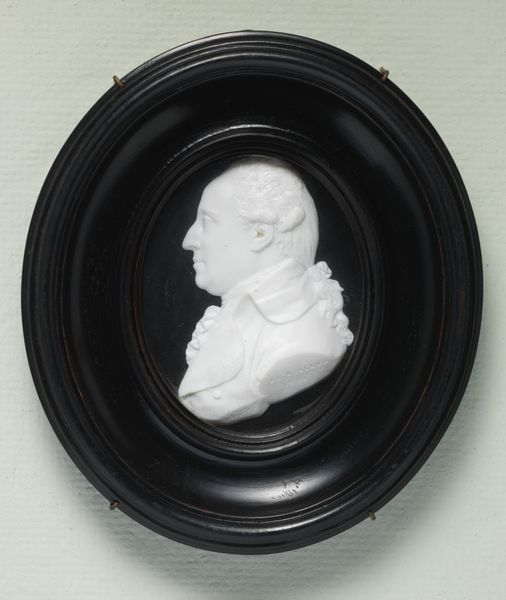
relief, sculpture, marble, ivory
#
portrait
#
neoclacissism
#
sculpture
#
relief
#
sculpture
#
black and white
#
marble
#
ivory
#
miniature
#
profile
Dimensions: 1 1/8 x 7/8 in. (2.9 x 2.2 cm)
Copyright: Public Domain
Curator: This object, "Medal," a miniature portrait relief rendered in ivory and marble, dates back to 1789 and resides here at The Met. It's attributed to Henry Harris. The piece, though small, really draws me in; its exquisite details seem to suggest such intimacy. Editor: Yes, and that intimate scale combined with the cool formality of the profile presents a fascinating tension. Immediately I’m struck by how its crisp lines and oval format typify Neoclassical aesthetics, echoing cameos from antiquity. It almost feels…contained. Curator: That’s it precisely. I wonder about its original purpose. Was it a keepsake? A token of affection? Or something more formal, commemorating an event perhaps? It has the gravity and mystery to carry any or all of that baggage. Editor: The rendering emphasizes clear, distinct outlines; that sculptural clarity embodies a conscious revival of classical values. It also reminds me a bit about the French revolution happening at that moment. But here in this isolated medallion, you don't feel all of the turmoil, the artist has chosen this precise "contained" medium and perspective. Curator: That perspective gives it the feeling of observing a still, thoughtful moment lifted from the tumultuous flow of history. I find myself pondering about the subject’s life, anxieties, and desires—all veiled, yet hinted at beneath that placid surface. It seems to whisper a lot for its compact dimensions. Editor: Absolutely. It’s an intriguing dance between revealing and concealing; you are definitely on to something there! I am fascinated by the base; I think that adds more questions. Is that original? Was the composition created this way or later on? The format transforms an intimate image into something else... Curator: Right—that base suggests an element of display, maybe transforming personal admiration into something more stately or commemorative, and transforming that little medallion into a piece to show off for visitors in the house or, perhaps, as part of a bigger ensemble. Editor: Seeing these meticulous design choices highlights the work as a formal exercise—about line, form, and historical reference more than about just the person depicted. At the end this medallion it is a clear representation of neoclassicism that reflects on what was important at that moment and in history. Curator: Well, in the end I suppose all art is a little like that; it tries to show you one thing when, in the depths of itself, it is trying to tell you another, a secret perhaps. Editor: A secret for us to try to unravel... Exactly!
Comments
No comments
Be the first to comment and join the conversation on the ultimate creative platform.

